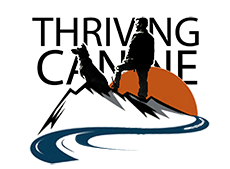
Does Your Dog Know the Difference Between Stay and Wait?
Understanding the seemingly subtle yet profound differences between Stay and Wait are not only life enhancing, they can save your dog’s life! Intrigued? Good, then let's take a look at these two commands, the differences between them and some real life scenarios for their application.
Stay: Stay means "Stay like a statue" and is generally preceded by a position command such as Sit or Down. Stay controls both body position and geographic location. Essentially you are saying, "I need you to stay in this exact spot, and hold this exact pose until I release you."
Wait: Wait means "Don't cross that line." It is boundary training rather than formal obedience training. Wait is most commonly applied to thresholds such as doors and gates. It is more casual than Stay in the sense that the dog can do whatever they want as long as they are behind the line.
Which one is more important?
Stay and Wait are both super important! Particular situations will determine which one is best at any given time. Let's look at a few examples:
Doors: Door dashing is a potentially life threatening behavior because doors lead to streets. Doors also lead to cool stuff making them valuable resources. Hence, control around doors is critical for safety as well as establishing leadership. A Sit-Stay at the door is fine but most dogs will still bolt if not made to Sit first. Wait is much better because it establishes the threshold as a boundary. Running in circles, standing on their head…the dog learns not to go out the door without permission…no matter what!
Outdoor Cafe: You’re at the coffee shop with Rover and need a refill, should you use Wait or Stay? Wait is okay, if you have a dog that’s phenomenal when left at liberty in a crowd BUT I should emphasize that 99.99% of dogs DO NOT qualify. I would recommend a Down-Stay, not only when getting a refill, but for the entire visit. This will help Rover learn a sort of conditioned relaxation or what I call The Art of Doing Nothing. Exception: You may want to let Rover get some affection from someone or meet another dog but he must be released to do so.
Off-Leash Adventures: In the scenario where you are having an off-leash hike and your dog is getting too far ahead, do you use Wait or Stay? Either could work but here’s my take on it; I might throw in a long distance Sit or Down just for practice, or I might call them back to me, but since I prefer to keep the micromanagement to a minimum and casually enjoy nature with my dogs I would most likely use a Wait command. This is essentially like throwing up an invisible boundary and saying “Don’t go any farther.” This allows the dog complete freedom, this side of the line, and is easily taught with a quick leash pop or stepping on a 50’ long-line.
Conclusion: Ultimately it’s up to you to determine which situations lend themselves better to Stay or Wait but now you have the knowledge that there is a clearly defined difference.
Please contact me or a qualified balanced trainer in your area if need help with your dog's behavior.
-Chad Culp, Certified Dog Trainer and Canine Behavior Consultant
© Thriving Canine 2014
Related Blogs:



